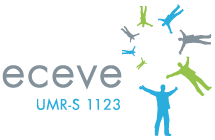Effectiveness of a School- and Primary Care-Based HPV Vaccination Intervention: The PrevHPV Cluster Randomized Trial
Résumé
Importance - The human papillomavirus (HPV) vaccine is safe and effective, yet vaccination coverage remains below public health objectives in many countries. Objective - To examine the effectiveness of a 3-component intervention on HPV vaccination coverage among adolescents aged 11 to 14 years 2 months after the intervention ended, each component being applied alone or in combination. Design, Setting, and Participants - A cluster randomized trial with incomplete factorial design (PrevHPV) was conducted between July 1, 2021, and April 30, 2022, in French municipalities receiving 0, 1, 2, or 3 components of the intervention. Randomization was stratified by school district and municipalities’ socioeconomic level. Analyses were carried out on 11- to 14-year-old adolescents living in all participating municipalities, regardless of what had been implemented. Intervention - The PrevHPV intervention had 3 components: (1) educating and motivating 11- to 14-year-old adolescents in middle schools, along with their parents; (2) training general practitioners (GPs) on up-to-date HPV information and motivational interviewing techniques; and (3) free HPV vaccination at school. Main Outcomes and Measures - The primary outcome was HPV vaccination coverage (≥1 dose) 2 months after the intervention ended among 11- to 14-year-old adolescents living in participating municipalities, based on the French national reimbursement database and data collected during the trial in groups randomized to implement at-school vaccination. Results - A total of 91 municipalities comprising 30 739 adolescents aged 11 to 14 years (15 876 boys and 14 863 girls) were included and analyzed. Half the municipalities were in the 2 lowest socioeconomic quintiles and access to GPs was poor in more than two-thirds of the municipalities. Thirty-eight of 61 schools (62.3%) implemented actions and 26 of 45 municipalities (57.8%) had at least 1 trained GP. The median vaccination coverage increased by 4.0 percentage points (IQR, 2.0-7.3 percentage points) to 14.2 percentage points (IQR, 9.1-17.3 percentage points) at 2 months. At-school vaccination significantly increased vaccination coverage (5.50 percentage points [95% CI, 3.13-7.88 percentage points]) while no effect was observed for adolescents’ education and motivation (−0.08 percentage points [95% CI, −2.54 to 2.39 percentage points]) and GPs’ training (−1.46 percentage points [95% CI, −3.44 to 0.53 percentage points]). Subgroup analyses found a significant interaction between at-school vaccination and access to GPs, with a higher effect when access was poor (8.62 percentage points [95% CI, 5.37-11.86 percentage points] vs 2.13 percentage points [95% CI, −1.25 to 5.50 percentage points]; P = .007 for interaction). Conclusions and Relevance - In this cluster randomized trial, within the context of the late COVID-19 pandemic period and limited school and GP participation, at-school HPV vaccination significantly increased vaccination coverage. The trial did not show a significant effect for training GPs and education and motivation, although it may be observed after more time has elapsed after the intervention.
| Origine | Fichiers éditeurs autorisés sur une archive ouverte |
|---|---|
| licence |


